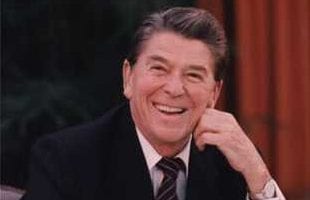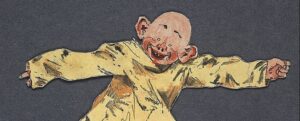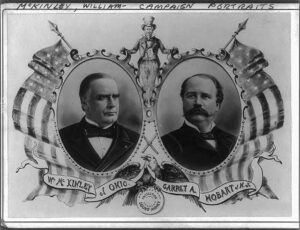
Reaganomics and Clintonian Investment
Two of the largest landslides in American presidential elections occurred just sixteen years apart. President Lyndon Johnson, the liberal architect of the “Great Society,” trounced conservative icon Barry Goldwater of Arizona, in 1964, winning 486 electoral votes to Goldwater’s 52. The conservative former governor of California – and one-time movie star turned politician – Ronald Reagan, turned the tables in 1980, defeating Democratic incumbent Jimmy Carter by a nearly identical margin, 489-49. When teaching the conservative resurgence of the 1980s, I liked to show my students the electoral maps of ’64 and ’80 and ask them; What the heck happened? Most of my students were within a year or two of being 16 years old. They understood that in the history of the United States, 16 years was a brief period. It perplexed them. How could the nation swing so dramatically – from liberalism to conservatism – in the span of a high school student’s lifetime?
My students enjoyed suggesting possible explanations for the dramatic turnaround in conservative fortunes. Perhaps there was a backlash against LBJ’s spending on Great Society welfare programs? Or maybe Reagan’s attacks on “welfare queens” played well with southern voters and rust belt whites looking for someone to blame for their troubles? Some students suggested that the so-called “credibility gap” – a phrase used to describe lying about Vietnam by the Johnson administration was to blame. Of course, the problems in the Carter years – the oil shortage, stagflation, and the Iranian Hostage crisis made Jimmy Carter, the most vulnerable incumbent since Herbert Hoover.
One reason for the conservative comeback was the unique political skills of Ronald Reagan. Reagan honed his skills speaking to civic groups in California during the early 1960s. By the time he took the stage on October 27, 1964, in support of Goldwater’s campaign, he had begun to call his remarks “The Speech.” Now called A Time for Choosing, this speech – in the words of political scientist Steven F.Hayward – thrust Reagan “to the front rank of presidential politics overnight.” Reagan attacked liberals on taxes, spending, national defense, and what he saw as a lack of respect for the Constitution. These attacks became boiler-plate rhetoric for the conservative movement that fueled Reagan’s election as president in 1980.
Reagan’s two terms in office were followed by one term of his former Vice-President George H.W. Bush. Bush faced an uphill battle for reelection in 1992 because of a struggling economy and the skills of another talented politician, Bill Clinton of Arkansas. Clinton’s sex scandal in his second term may obscure his remarkable political ability. Indeed, if one overlooks the policy differences of Reagan and Clinton, one can identify several similar characteristics. Both campaigned for president against excess spending, waste, and inefficiency in government, and the need to balance the budget. Ironically, Clinton, the “tax and spend liberal”, achieved a balanced budget. Reagan – the proponent of lower taxes and less spending – did not. Both Reagan and Clinton were skilled communicators – adept at softening the hard edges of their policy initiatives with their rhetoric.
I was fortunate to take a graduate class on American Political Economy with Professor Hayward at Ashland University. We read economic historian John Steele Gordon’s remarkable book surveying the economic history of the United States, An Empire of Wealth. It became one of my favorite books and a frequently used resource for my APUSH students. Gordon argues that: “Politics is usually a choice between imperfect means to desirable ends.” Politics – in a republic – also requires the ability to sell your ideas to a public conditioned to view politicians as slick hucksters. Reagan’s aw-shucks demeanor and folksy manner worked to restore confidence in the American people in the aftermath of Vietnam, Watergate, and economic struggles. Clinton had a knack for looking into the camera and leave the impression he was in your living room having a conversation with a neighbor.
My colleague, Jeremy Gypton, has recorded both speeches included in this chapter from Teaching American History’s two-volume collection, Documents and Debates in American History and Government. Students can read along as they listen to the speeches – or teachers may choose to show videos of the speeches and have the students follow along with the transcripts. Encourage your students to think about each president’s vision of the government’s proper role in managing the economy. What does each man mean by the word opportunity? Do they want the same people to benefit from the opportunities they believe will result from their initiatives? Do they agree that government spending can be an “investment” in the economy?
Documents in this chapter include:
A. Address to the Nation on the Economy, President Ronald Reagan, February 5, 1981
B. The President’s Address to a Joint Session of Congress, President Bill Clinton, February 17, 1993
We have provided audio recordings of the chapter’s Introduction, Documents, and Study Questions. These recordings support literacy development for struggling readers and the comprehension of challenging text for all students.
Teaching American History’s We the Teachers blog will feature chapters from our two-volume Documents and Debates with their accompanying audio recordings each month until recordings of all 29 chapters are completed in August of 2021. In today’s post, we feature Volume II, Chapter 28: Political Economy at the End of the Twentieth Century. On August 10, we will highlight Chapter 15: War for Union or Abolition, from Volume I of Documents and Debates in American History. We invite you to follow this blog closely, so you can take advantage of this new feature as each recording becomes available.



